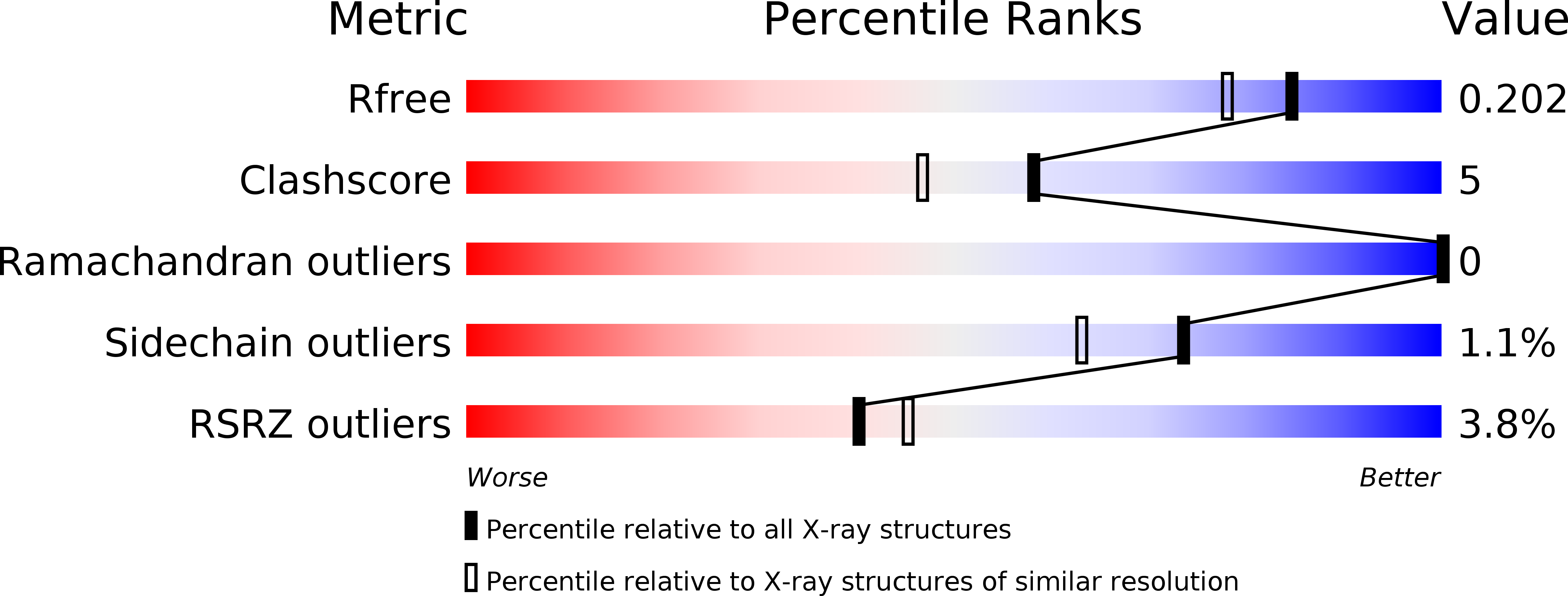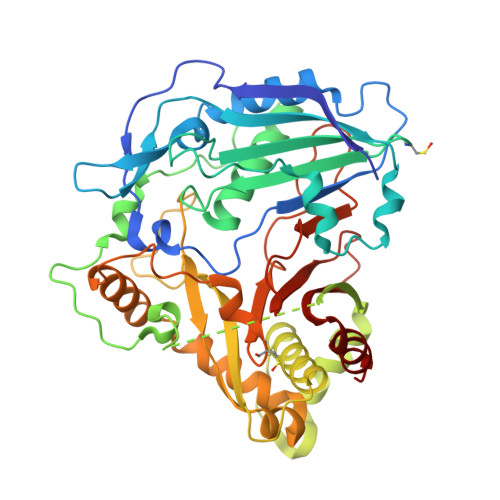A structural basis for the biosynthesis of the major chlorogenic acids found in coffee.
Lallemand, L.A., Zubieta, C., Lee, S.G., Wang, Y., Acajjaoui, S., Timmins, J., McSweeney, S., Jez, J.M., McCarthy, J.G., McCarthy, A.A.(2012) Plant Physiol 160: 249-260
- PubMed: 22822210
- DOI: https://doi.org/10.1104/pp.112.202051
- Primary Citation of Related Structures:
4G0B, 4G22, 4G2M - PubMed Abstract:
Chlorogenic acids (CGAs) are a group of phenolic secondary metabolites produced by certain plant species and an important component of coffee (Coffea spp.). The CGAs have been implicated in biotic and abiotic stress responses, while the related shikimate esters are key intermediates for lignin biosynthesis. Here, two hydroxycinnamoyl-coenzyme A shikimate/quinate hydroxycinnamoyl transferases (HCT/HQT) from coffee were biochemically characterized. We show, to our knowledge for the first time, that in vitro, HCT is capable of synthesizing the 3,5-O-dicaffeoylquinic acid diester, a major constituent of the immature coffee grain. In order to further understand the substrate specificity and catalytic mechanism of the HCT/HQT, we performed structural and mutagenesis studies of HCT. The three-dimensional structure of a native HCT and a proteolytically stable lysine mutant enabled the identification of important residues involved in substrate specificity and catalysis. Site-directed mutagenesis confirmed the role of residues leucine-400 and phenylalanine-402 in substrate specificity and of histidine-153 and the valine-31 to proline-37 loop in catalysis. In addition, the histidine-154-asparagine mutant was observed to produce 4-fold more dichlorogenic acids compared with the native protein. These data provide, to our knowledge, the first structural characterization of a HCT and, in conjunction with the biochemical and mutagenesis studies presented here, delineate the underlying molecular-level determinants for substrate specificity and catalysis. This work has potential applications in fine-tuning the levels of shikimate and quinate esters (CGAs including dichlorogenic acids) in different plant species in order to generate reduced or elevated levels of the desired target compounds.
Organizational Affiliation:
European Synchrotron Radiation Facility, BP 181, 38043 Grenoble, France.

















